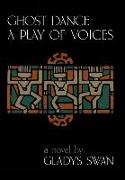Read more
Written at the height of the arts and crafts movement in fin-de-siecle Vienna, Alois Riegl's Stilfragen represented a turning point in defining art and understanding the sources of its inspiration. Demonstrating an uninterrupted continuity in the history of ornament from the ancient Egyptian through the Islamic period, Riegl argued that the creative urge manifests itself in both "great art" and the most humble artifact, and that change is an inherent part of style. This new translation, which renders Riegl's seminal work in contemporary, readable prose, allows for a fresh reexamination of his thought in light of current revisionist debate. His discovery of infinite variation in the restatement of several decorative motifs - the palmette, rosette, tendril - led Riegl to believe that art is completely independent from exterior conditions and is beyond individual volition. This thinking laid the groundwork for his famous concept of Kunstwollen, or artistic intention.
About the author
Gladys Swan is the author of an earlier novel, Carnival for the Gods, as well as three story collections, On the Edge of the Desert, Of Memory and Desire, and Do You Believe in Cabeza de Vaca? She teaches at the University of Missouri at Columbia and in the MFA program in creative writing at Vermont College.

